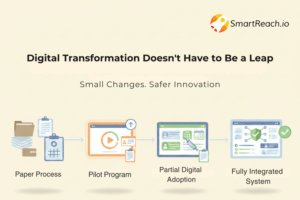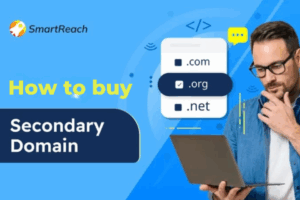How Do Discovery Questions Reduce B2B Customer Costs?
In the fast-paced world of B2B marketing, many businesses default to the same surface-level request: “We need more leads.” While lead generation is important, this simple statement rarely captures the underlying challenges a company faces in its marketing strategy.
To uncover meaningful opportunities, sales teams must go beyond the obvious and ask deeper discovery questions that illuminate brand positioning challenges, competitive pressures, and customer acquisition costs.
The importance of deep discovery questions
Sales conversations that focus only on lead volume tend to miss the broader picture.
Understanding the root causes of marketing struggles allows sales teams to offer more comprehensive solutions that directly address a company’s strategic needs.
By asking the right questions, sales professionals can identify pain points that are often invisible on the surface.
Common marketing pain points sales teams miss
Before diving into discovery frameworks, recognize these frequently overlooked challenges:
- Inconsistent brand messaging across sales and marketing channels
- Slow lead response times (average 42 hours vs. ideal 5 minutes, leads contacted within 5 minutes are 21x more likely to convert)
- No visibility into which campaigns actually drive revenue
- Manual outreach processes that inflate CAC by 30-50%
- Disconnected tech stacks where marketing and sales tools don’t communicate
- Lack of follow-up consistency across sales reps
Key areas to explore
Some key areas to explore include:
- Marketing Effectiveness: Are current campaigns achieving the desired ROI? What metrics define success for your business? Are certain channels underperforming despite significant investment?
- Brand Positioning Challenges: How does your brand differentiate itself in the market? Are customers able to clearly articulate the value you provide? Do internal stakeholders have a consistent vision of the brand?
- Competitive Pressures: Who are your main competitors, and what are they doing differently? Are competitors leveraging tactics that make your company’s offerings seem less compelling?
- Customer Acquisition Costs: How much does it cost to acquire a new customer? Are acquisition costs sustainable relative to lifetime value? Where could process improvements reduce these costs without sacrificing quality?
One often-overlooked factor in high CAC is manual, inefficient outreach processes.
Sales teams spending hours on repetitive tasks, like manual email follow-ups or uncoordinated multi-channel touchpoints, drive up costs without improving conversion rates.
Platforms like SmartReach.io help reduce CAC by automating personalized email sequences, A/B testing subject lines, and syncing outreach across email, LinkedIn, and calls, ensuring no lead falls through the cracks while freeing sales reps to focus on high-value conversations.
Sales and marketing alignment gaps
Beyond individual channel performance, many B2B companies struggle with disconnects between marketing-generated leads and sales follow-up.
Marketing may deliver qualified leads, but if sales lacks a structured, timely outreach system, conversion rates suffer.
Discovery questions to uncover this gap:
- How quickly does your sales team follow up on new leads?
- Are follow-up sequences consistent across reps, or does each salesperson have their own approach?
- Can you track which touchpoints (email, call, LinkedIn message) actually move deals forward?
- Do marketing and sales agree on what constitutes a “qualified” lead?
SmartReach.io addresses this by providing centralized sales engagement workflows, ensuring every lead gets a timely, multi-touch sequence with trackable metrics like open rates, reply rates, and meeting bookings. This bridges the gap between marketing’s lead generation and sales’ need for structured, measurable outreach.
Guiding sales teams to ask the right questions
To uncover these deeper insights, sales professionals must adopt a consultative approach. Here are some strategies for guiding discovery discussions:
1. Start with open-ended questions
Instead of asking yes/no questions, encourage clients to describe their experiences, goals, and frustrations. For example, ask, “Can you walk me through your most recent marketing campaign and the results you achieved?”
2. Focus on outcomes, not just outputs
Shift the conversation from activity metrics like clicks or impressions to meaningful outcomes such as pipeline growth, revenue contribution, and cost efficiency.
3. Explore the broader market context
Ask about competitor strategies, industry trends, and market dynamics. Understanding external pressures helps identify gaps and opportunities where your solutions can provide a unique advantage.
4. Quantify constraints and costs
Discussing customer acquisition costs, resource allocation, and budget limitations often uncovers inefficiencies or areas where optimization can drive significant results.
5. Diagnose process bottlenecks in outreach
Ask prospects: “Walk me through your current sales outreach process from lead to meeting.” Listen for red flags like:
- “Our reps manually send follow-up emails”
- “We lose track of leads after the second touchpoint”
- “We can’t tell which email templates actually work”
- “There’s no accountability for follow-up timing”
These signal opportunities for sales engagement automation.
Tools like SmartReach.io eliminate these bottlenecks by automating follow-up cadences, providing real-time analytics on what messaging resonates, and ensuring no lead is forgotten, all while maintaining the personalization that drives responses.
Connecting discovery to actionable solutions
Once these deeper pain points are uncovered, sales teams can tailor solutions that go beyond generic lead generation.
For example, they might recommend strategies that improve brand positioning, optimize campaign spend, or reduce acquisition costs through technology integration.
Tools like salesforce sales optimization can be invaluable in this process, helping align marketing and sales efforts to increase pipeline efficiency, track campaign effectiveness, and ultimately convert leads into long-term customers.
Additionally, specialized sales engagement platforms like SmartReach.io complement broader CRM systems by focusing specifically on outreach automation, handling personalized email sequences, multi-channel touchpoints, and A/B testing at scale.
By centralizing these activities, sales teams convert leads into long-term customers without the manual chaos that inflates acquisition costs.
FAQs on discovery challenges
What are discovery questions in B2B sales?
Discovery questions are open-ended inquiries that uncover prospects’ pain points, goals, and constraints. Instead of “Do you need leads?” ask “What challenges face your lead generation?” This reveals the full situation for tailored solutions.
How do you identify marketing pain points?
Explore four areas: effectiveness (ROI/channel performance), positioning (brand clarity), competition (market pressures), and costs (CAC sustainability). Ask “Which channels underperform despite investment?” Look for gaps between goals and results.
What is customer acquisition cost (CAC) in SaaS?
CAC is total acquisition expense divided by new customers. B2B SaaS CAC ranges from $200-$500 (SMB) to $5,000-$50,000+ (enterprise). Sustainable CAC should be under one-third of lifetime value.
How can sales teams reduce customer acquisition costs?
Reduce CAC by automating repetitive tasks, responding to leads within 5 minutes, and A/B testing messaging. SmartReach.io cuts CAC 30-40% through automated sequences and analytics.
What tools help with sales and marketing alignment?
Use integrated tools: CRMs manage customer data, sales engagement platforms (like SmartReach.io) automate outreach and track touchpoints, and marketing automation nurtures leads. Shared dashboards showing conversion rates by source align priorities.
Why do B2B companies struggle with brand positioning?
Multiple stakeholders create inconsistent messaging, websites, sales decks, and reps pitch different angles. Technical products are hard to differentiate from competitors. Weak positioning lengthens sales cycles.
How do you quantify marketing effectiveness beyond lead volume?
Track revenue-focused metrics: pipeline generated, conversion rates per stage, CAC, LTV, and payback period. A campaign with 200 leads and 20 customers beats 1,000 leads with 5 customers.
What are the most common sales process bottlenecks?
Common bottlenecks: slow response times (hours vs. minutes), inconsistent follow-ups, manual data entry (2+ hours daily), and poor marketing-sales handoffs. Responding within 5 minutes (vs. 30+) increases conversions 21x.



